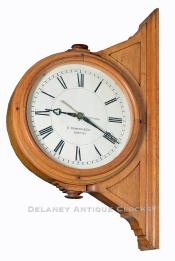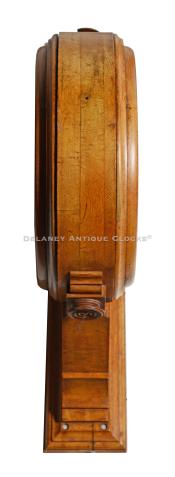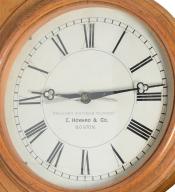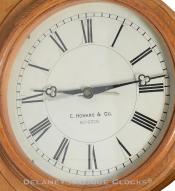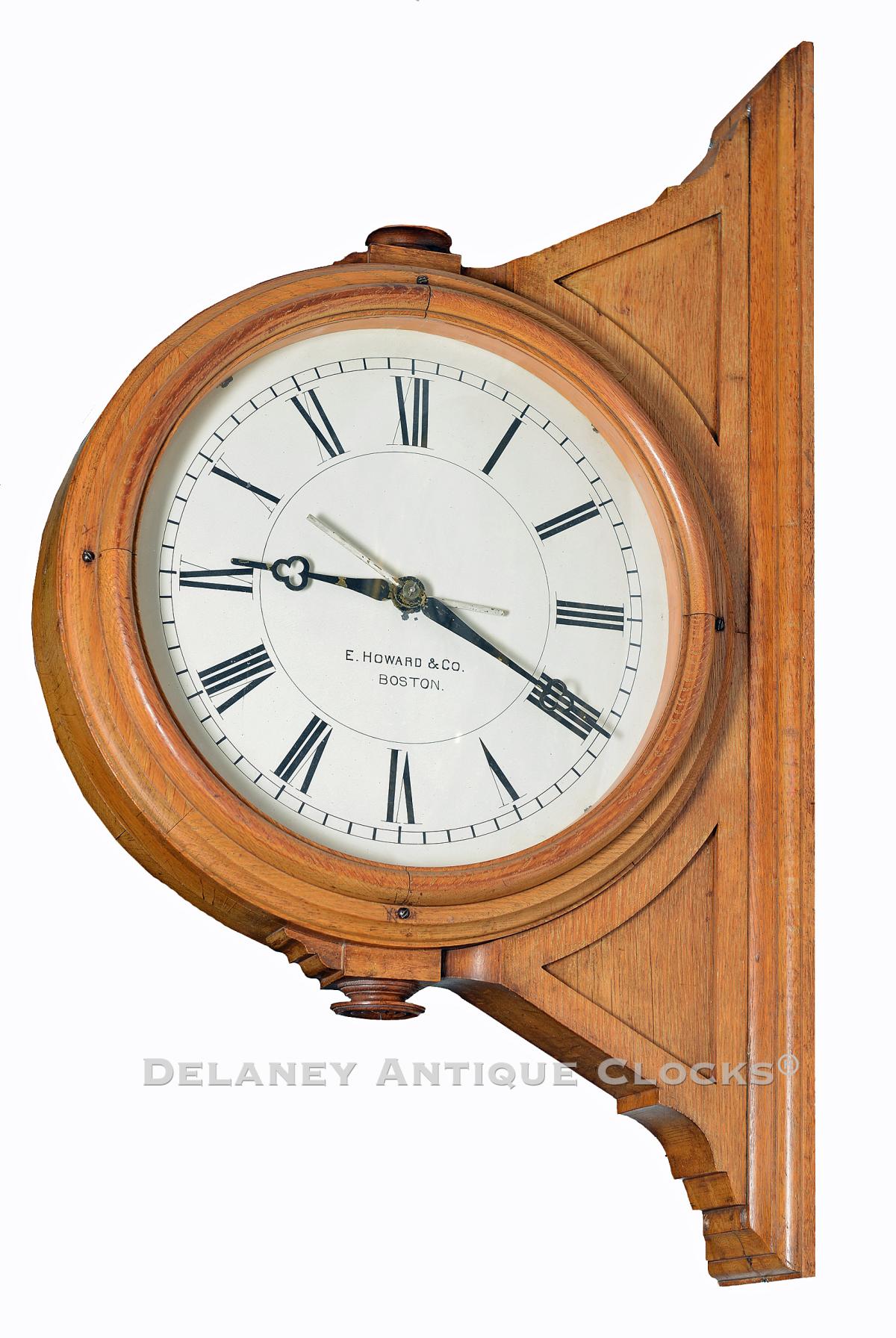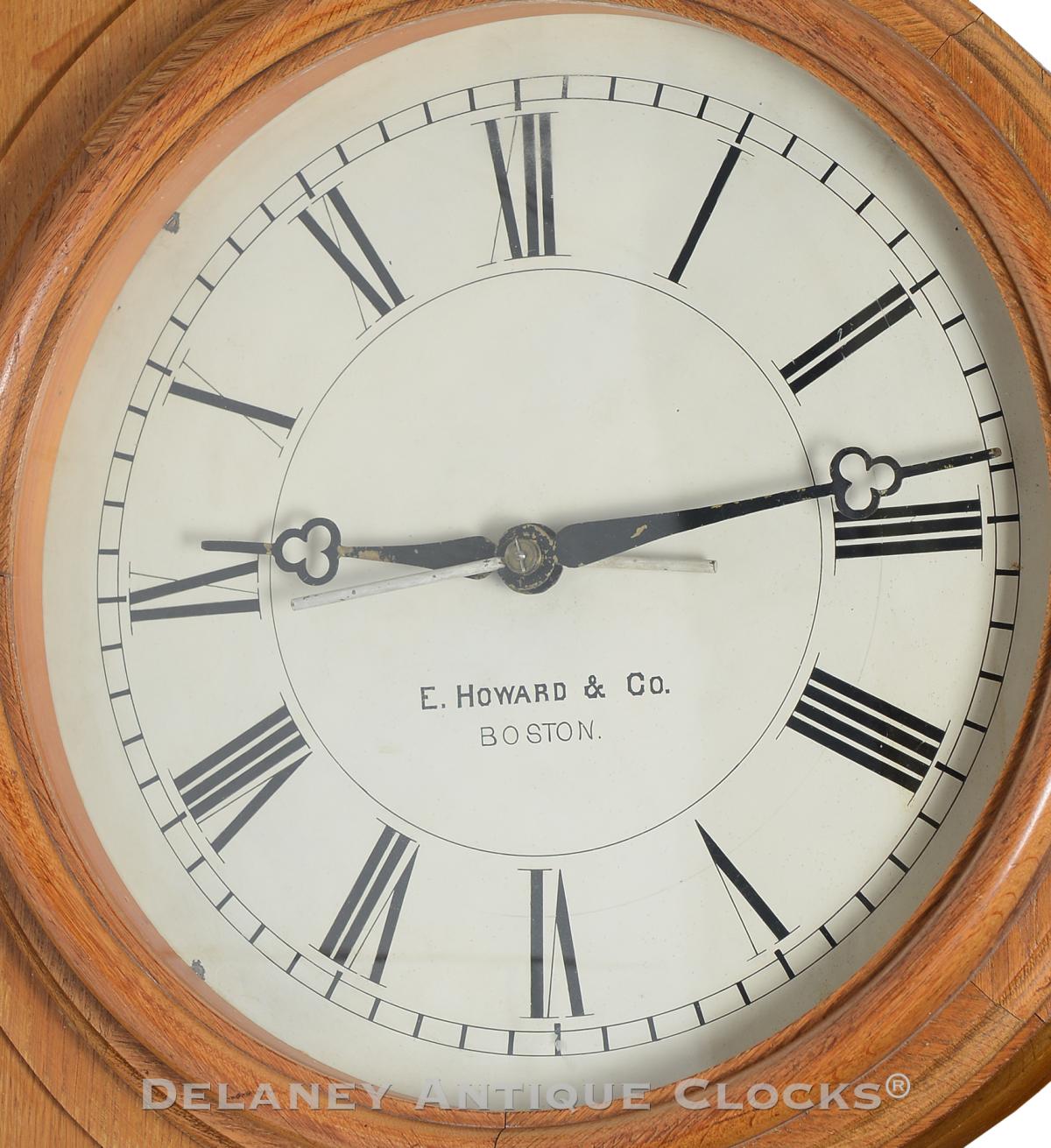E. Howard & Co. Boston. A two-sided public clock. 223310.
The E. Howard Clock Company entered the new field of electric timekeeping in 1872. They did this by adding electrical contacts to several of their high-grade, weight-driven regulators. This included their varied line of observatory grade regulators. The second category was their line of Watchman's clocks, which they made in significant numbers and was a big part of the Company's business and focus. They quickly added Master Clocks to their production line. These were often outfitted with several secondary electric clocks. Howard sold this line through the 1950s. Either 30-second or 60-second impulses typically drove the secondary movements. This impulse originated from the electrical contacts fitted into the master regulators or even on tower clock movements. The Howard Company was a late entry in self-winding time systems. They produced their first self-winding master clock in about 1904 or 1905. These clocks were electrically wound every minute and featured clockworks modified from existing Howard movements. Their most popular model was based on the Number 89. Howard also offered a paper tape program system for scheduled bell ringing. Unfortunately, they never did develop any automatic correction for this system. Howard was still active as a supplier of electric time systems through 1941. Their interest in the electro-mechanical clock business dropped off before World War II, but they did supply replacement parts as late as 1964.
This is an E. Howard & Co electric or secondary clock. This large example was designed to hang from the ceiling, although it could be easily rotated to mount it sideways on a wall (shown here) or upright on a partition. Installed in these locations or displayed in a gallery, this clock makes a statement. The oak case measures approximately 37.25 inches across by 23.5 inches tall and 7 inches deep. The case design features uniquely shaped moldings, inset panels, and decorative turnings, adding a touch of intrigue to its design. The case retains its original surface.
The dials, one on each side, are protected by glass. They are original and painted on zinc. They measure 16 inches in diameter. The time is displayed by spade-shaped hands, which are counterbalanced. The signature is original and painted on the dial.
The Howard-made movement features rectangular-shaped plates and is signed or die-stamped on the front plate. The escapement in the movement is electrically powered and is operated by a modern electrical circuit. An electrical impulse is sent from a modern technology located within the case. This impulse is sent to the movement from the circuit once each minute. The power source is from a standard wall outlet or can be modified to run off batteries. These movements are robust and work very well, providing you with a reliable timepiece. As a result, one can now position this clock in a space and not have to worry about winding it once a week.
Currently, we have a couple of two-sided hanging clocks in our shop. They are mounted to the underside of large wooden beams and attract much attention.
This clock is a product of the E. Howard Clock Company was made circa 1910, a period known for significant advancements in electric timekeeping. Caring for this clock is not just owning a timepiece but a piece of history.
Inventory number 223310.
The E. Howard & Company succeeded the Howard & Davis firm in 1857. The Howard & Davis firm was comprised of Edward Howard and David Porter Davis and was established in 1842 in Roxbury, Massachusetts. Both men had just completed their clock apprenticeship under the guidance of Aaron Willard Jr in Boston. The Howard & Davis firm made high-grade clocks, precision balances, sewing machines, fire engines, and watches. After the dissolution of Howard & Davis, Edward Howard became Boston's leading manufacturer of weight-driven residential and commercial clocks. The firm also made a large number of tower clocks and watchman and salve clock systems. These sold well in the last quarter of the 1800s.
It has been said that the E. Howard Clock company never made an inexpensive clock, and everything they made was of very good quality. As a result, Howard clocks have become very collectible and are prized by their owners. Today, the E. Howard name enjoys outstanding name recognition.
For a more in-depth reading of Edward Howard and his various businesses, please read "Willard's Patent Time Pieces," written by Paul Foley.

